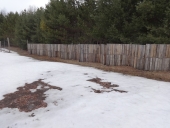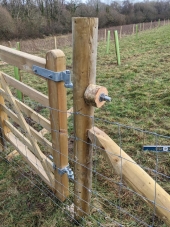




 3
3




Idle dreamer
 5
5








Invasive plants are Earth's way of insisting we notice her medicines. Stephen Herrod Buhner
Everyone learns what works by learning what doesn't work. Stephen Herrod Buhner
 2
2




 1
1




Moderator, Treatment Free Beekeepers group on Facebook.
https://www.facebook.com/groups/treatmentfreebeekeepers/





 2
2








 1
1




 2
2




 1
1




 2
2




John Daley Bendigo, Australia The Enemy of progress is the hope of a perfect plan
Benefits of rainfall collection https://permies.com/t/88043/benefits-rainfall-collection
GOOD DEBT/ BAD DEBT https://permies.com/t/179218/mortgages-good-debt-bad-debt

 1
1




List of Bryant RedHawk's Epic Soil Series Threads We love visitors, that's why we live in a secluded cabin deep in the woods. "Buzzard's Roost (Asnikiye Heca) Farm." Promoting permaculture to save our planet.

 3
3




Hans Albert Quistorff, LMT projects on permies Hans Massage Qberry Farm magnet therapy gmail hquistorff
 2
2




"Where will you drive your own picket stake? Where will you choose to make your stand? Give me a threshold, a specific point at which you will finally stop running, at which you will finally fight back." (Derrick Jensen)




Tyler Ludens wrote:You might be able to fasten boards to the trees with screws or nails and then staple the wire to the boards.
 2
2




Sometimes the answer is nothing





Josephine, Forest Witch












 3
3




Josephine Howland wrote:I have a similar situation where the majority of my property is forest. I don't need or care to fence in the entire property. But our newer neighbors have their property entirely fenced in for their animals. Their property doesn't go back as far as ours, so we're only talking about maybe 500 feet. There is forest between us, but their dogs bark, for hours! We can't step out on to our front steps without them barking. Gardening, getting in or out of our vehicles, sitting to enjoy a glass of ice tea...they bark and bark and bark some more. Big dogs, loud barkers. Our dogs look towards them, and shake their head like they think their dogs are just demented. So I want to put up another fence (maybe like the wire fence shown in some photos, weaving it through the woods, but I need to have it be a sound barrier more than a physical barrier. What can I add to the fence as a sound barrier? I know they claim that their dogs are livestock guardians. But the dogs sleep in the house, so they're really not guardians. Seriously in the summer when out windows are open, If you get up to pee in the night, they can hear you inside their house and they will bark at 2 in the morning. Frustration level is high. Any noise barrier ideas? Thank you.
List of Bryant RedHawk's Epic Soil Series Threads We love visitors, that's why we live in a secluded cabin deep in the woods. "Buzzard's Roost (Asnikiye Heca) Farm." Promoting permaculture to save our planet.








 1
1




 1
1




Some people age like fine wine. I aged like milk … sour and chunky.
 2
2




These videos, produced by Wayne Hall for the Alaska Department of Fish and Game, will demonstrate setting up an electric fence, including how they work and the components you will need for both backcountry and more permanent installations.
Invasive plants are Earth's way of insisting we notice her medicines. Stephen Herrod Buhner
Everyone learns what works by learning what doesn't work. Stephen Herrod Buhner
 2
2





|
You guys wanna see my fabulous new place? Or do you wanna look at this tiny ad?
Learn Permaculture through a little hard work
https://wheaton-labs.com/bootcamp
|



